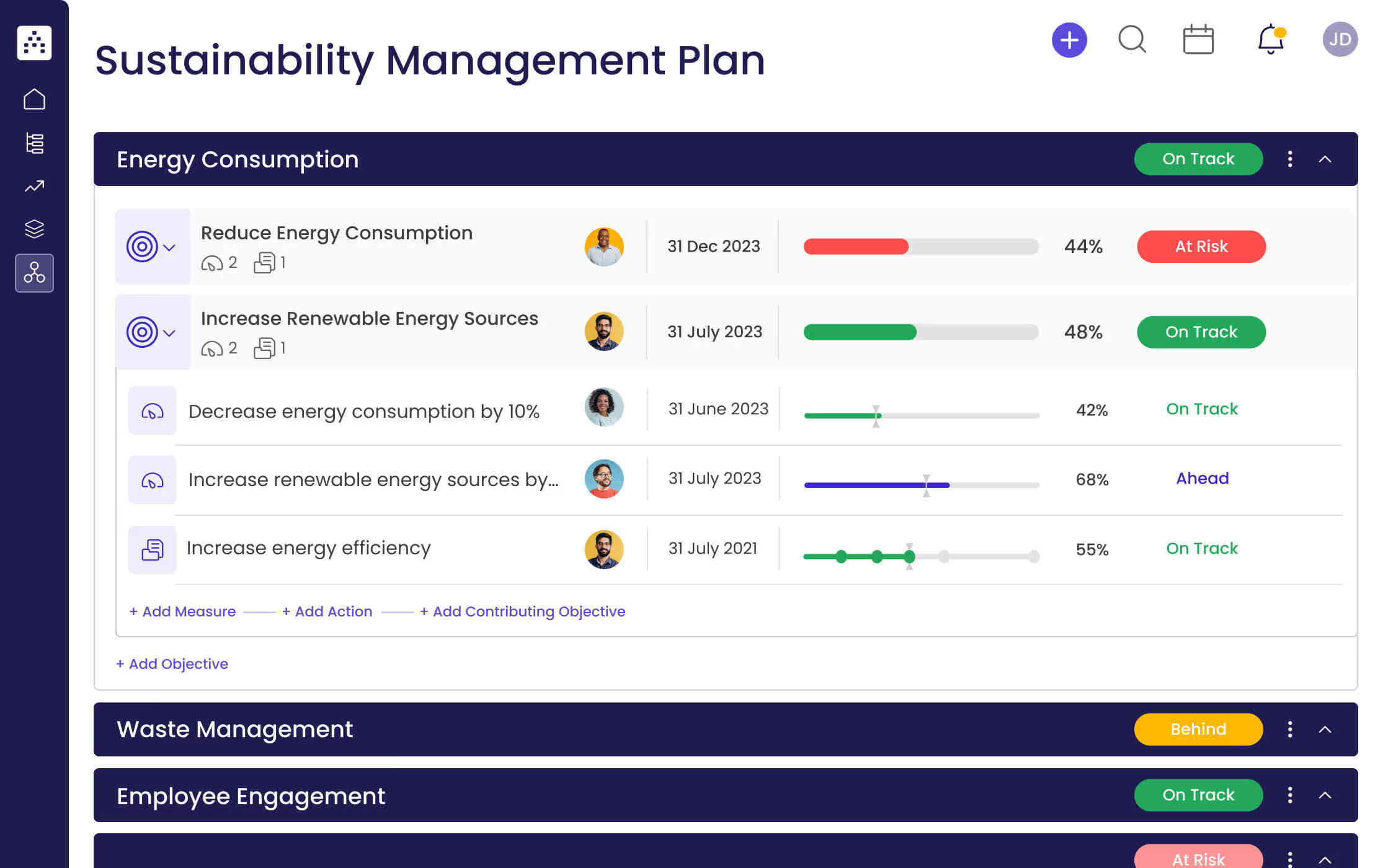What is a Sustainability Management Plan?
A sustainability management plan outlines the goals and objectives of an organization when it comes to sustainability. It includes measurable targets to track progress and success, as well as an action plan to implement these goals. The plan should be tailored to the particular needs and resources of the organization, and should be regularly revised to take into account changing conditions.
What's included in this Sustainability Management Plan template?
- 3 focus areas
- 6 objectives
- 6 projects
- 6 KPIs
Each focus area has its own objectives, projects, and KPIs to ensure that the strategy is comprehensive and effective.
Who is the Sustainability Management Plan template for?
This template is for sustainability managers and teams who are looking to create comprehensive sustainability management plans. It can be used to set goals, define objectives, set measurable targets (KPIs), and develop related projects to achieve these KPIs. The template is designed to be flexible and customizable, so it can be tailored to the specific needs of any organization.
1. Define clear examples of your focus areas
A focus area is a broad area of activity or interest that your organization is looking to improve upon. Examples of focus areas could include energy consumption, waste management, employee engagement, and water conservation. It is important to define your focus areas in order to set clear objectives and determine which activities are most important to your organization.
2. Think about the objectives that could fall under that focus area
An objective is a specific, measurable goal that your organization is looking to achieve. Examples of objectives could include reducing energy consumption, increasing renewable energy sources, increasing waste diversion, and increasing employee participation. It is important to set objectives in order to track progress and measure success.
3. Set measurable targets (KPIs) to tackle the objective
A KPI (key performance indicator) is a metric used to measure progress towards a specific goal. Examples of KPIs could include decreasing energy consumption by a certain percentage, increasing renewable energy sources by a certain percentage, or increasing employee participation by a certain percentage. Setting measurable targets allows you to track progress and measure success. An example of a KPI for the focus area of Energy Consumption could be: Decrease energy consumption by 10%.
4. Implement related projects to achieve the KPIs
A project (action) is a specific activity that can be undertaken to achieve a KPI. Examples of projects could include energy efficiency initiatives, increasing waste diversion efforts, or implementing employee engagement programs. It is important to implement related projects in order to achieve the desired KPIs.
5. Utilize Cascade Strategy Execution Platform to see faster results from your strategy
Cascade Strategy Execution Platform helps managers and teams create comprehensive management plans. It provides a streamlined, user-friendly interface for creating, tracking, and managing goals, targets, and performance indicators. With Cascade, you can create a comprehensive sustainability management plan in no time, and track progress to ensure success.


